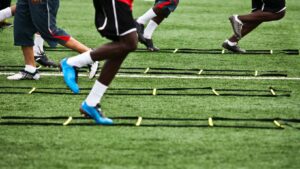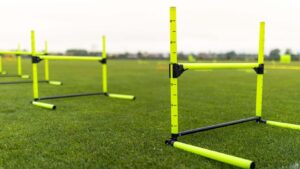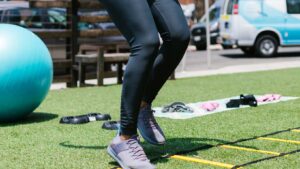In today’s fast-paced world, young athletes are constantly seeking ways to gain a competitive edge. Youth speed training has emerged as a crucial component in the development of budding sports stars, helping them enhance their performance and boost their confidence on the field. With the right training techniques, young athletes can improve their speed, agility, and overall athleticism, setting the stage for future success.
Parents and coaches alike recognize the importance of speed training in a young athlete’s regimen. It not only improves physical capabilities but also instills discipline and determination. By focusing on tailored exercises and drills, youth speed training programs cater to the unique needs of developing bodies, ensuring safety and effectiveness. As more young athletes embrace these programs, the benefits of speed training continue to make a significant impact on their sporting journey.
Youth Speed Training

Youth speed training focuses on enhancing the movement capabilities of young athletes. It includes a series of exercises that develop sprinting technique, acceleration, and agility. Trainers design these programs considering the unique physiological characteristics of children and adolescents.
Speed development requires proper technique before emphasizing force production. Athletes refine their running form through drills targeting stride mechanics, posture, and foot placement. These drills reduce injury risk by promoting efficient movement patterns.
Acceleration, a key component in speed training, involves exercises like sled pushes and short sprints. These activities increase an athlete’s ability to quickly reach top speed from a standstill.
Benefits of Speed Training for Youth
Youth speed training offers multiple benefits for young athletes. These advantages extend beyond physical capabilities, impacting overall athletic performance and mental well-being.
Physical Health Improvements
Speed training improves cardiovascular health by increasing heart rate during activities like sprints and agility drills. It enhances muscle strength and endurance, engaging major muscle groups. Exercises improve flexibility and coordination, which help reduce the risk of injuries. Trainers adapt programs to children’s developmental stages for optimal health benefits.
Boosting Athletic Performance
Speed training enhances sprint times and improves reaction times for better on-field performance. Specific drills improve acceleration, agility, and propulsion power, making athletes quicker and more efficient. Increased power and strength contribute to more effective gameplay and execution of sports-specific skills.
Essential Components of Youth Speed Training Programs

Youth speed training programs include several key components to maximize performance and safety. Each part contributes to developing speed and agility while minimizing injury risks.
Warm-Up and Stretching
Proper warm-up and stretching routines prepare young athletes for speed training. Dynamic stretching exercises improve flexibility and increase blood flow, which enhances muscle readiness. Activities such as leg swings, high knees, and arm circles effectively prime the body for intense workouts. Coaches design warm-ups to engage major muscle groups, facilitating optimal performance.
Drills and Exercises
Drills form the core of youth speed training, focusing on essential movement skills. Acceleration drills like sled pushes and shuttle runs develop start speed and quick bursts. Agility exercises, including ladder drills and zig-zag runs, enhance coordination and change-of-direction skills. Implementing plyometric exercises like box jumps increases explosive power and muscle elasticity. Trainers select drills that match athletes’ developmental stages, ensuring skill progression.
Selecting the Right Training Environment
The training environment is crucial for effective youth speed training. It directly affects performance, safety, and motivation for young athletes.
Trained Professionals and Coaches

Selecting qualified coaches ensures that youth receive proper guidance. Certified professionals bring experience in biomechanics and sports science, which helps tailor training programs to individual needs. Coaches with a background in youth athletics focus on age-appropriate techniques and foster positive learning environments. They also play a crucial role in monitoring progress and making adjustments for balanced development.
Safe and Suitable Facilities
Facilities must meet safety standards to reduce injury risk. They should provide adequate space for drills like sprints and plyometrics. Surfaces need to be even and well-maintained, supporting diverse exercises without causing harm. Good facilities include equipment such as cones, ladders, and sleds for varied training. Access to first aid and hydration stations is essential for managing any injuries or emergencies during sessions.

Leave a Reply